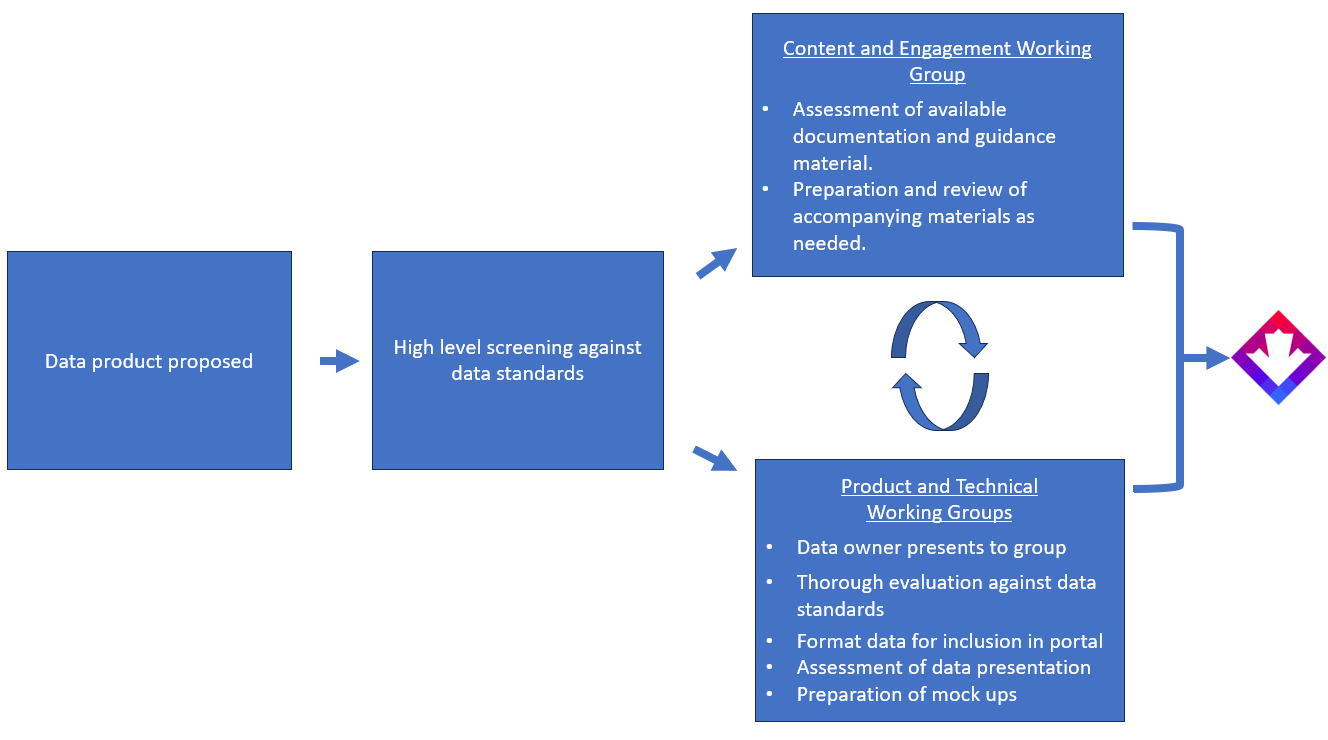Produced by Natural Resources Canada (NRCan), NRCANmet is a gridded dataset derived from station observations and is available at a ~6×10 km resolution over Canada. Daily minimum and maximum temperature, and precipitation amounts for the period 1950-2012 were produced by Hopkinson et al. (2011 – https://doi.org/10.1175/2011JAMC2684.1) and McKenney et al. (2011 – https://doi.org/10.1175/2011BAMS3132.1) on behalf of the Canadian Forest Service (CFS), NRCan. Gridding was accomplished with the Australian National University Spline (ANUSPLIN) software which uses a trivariate thin plate splines interpolation method (Hutchinson et al., 2009 – https://doi.org/10.1175/2008JAMC1979.1) with latitude, longitude and elevation as predictors. Note that gridded values may differ from climate stations and biases may be present at high elevations or in areas with low station density (Eum et al., 2019 – https://doi.org/10.5194/hess-23-5151-2019). See About ANUSPLIN for citations and more details.
Type: Interpolated observations
Citing this dataset: Citing ClimateData.ca
PCIC-Blend is a daily, gridded observational dataset which has been used in multivariate downscaling techniques such as MBCn, and was used in the development of CanDCS-M6. PCIC-Blend is based on three existing data sets. Two of these are recently updated versions of the NRCANmet dataset used to create CanDCS-U5 and CanDCS-U6: NRCANmet-Adjusted Precipitation, which spans Canada (MacDonald et al. 2021 – https://doi.org/10.1175/JAMC-D-20-0041.1), and NRCANmetV2 Temperature, spanning North America (MacDonald et al. 2020 – https://doi.org/10.1038/s41597-020-00737-2). The third dataset, PNWNAmet, covers Western Canada and the Pacific Northwest, and comprises minimum and maximum temperature and precipitation. While the updated NRCANmet data sets display notable improvements over the earlier version over central and eastern Canada, their performance is inferior to PNWNAmet over western Canada when compared to high quality station observations. PNWNAmet values in western Canada were combined with the NRCANmet V2 (temperature) and NRCANmet-Adjusted (precipitation) values in central and eastern Canada to produce PCIC-Blend.
Type: Interpolated observations
Citing this dataset: Citing ClimateData.ca
Adjusted and Homogenized Canadian Climate Data (AHCCD) consists of weather station datasets (temperature and precipitation only) and has been developed by Environment and Climate Change Canada for use in climate research, including climate change studies. The station records in AHCCD have been adjusted using statistical techniques to detect and remove discrepancies in long-term data records caused by non-climatic factors (e.g., changes in instrumentation, observing procedures, and weather station location or site exposure). Longer time series were sometimes created by combining data from nearby stations. Monthly, Seasonal and Annual data for these variables and more can be found at the following link: AHCCD Open Data.
Type: Station
Citing this dataset: Citing ClimateData.ca
Station Data is historical daily observed weather station data from the Meteorological Service of Canada and Environment and Climate Change Canada.
Type: Station
Citing this dataset: Citing ClimateData.ca
MSC Climate Normals 1981-2010
Climate Normals describe the average climate conditions of a particular location over a 30-year period.
At the end of each decade, Environment and Climate Change Canada calculates a new set of climate normals using station observations from that decade. All member countries of the World Meteorological Organisation calculate climate normals. As they describe the most recent average climate conditions for a location, they are often used to put extreme events into context.
The climate normals offered here are based on Canadian climate stations with at least 15 years of data available during the current 30-year normal period.
Type: Station
Citing this dataset: Citing ClimateData.ca
Intensity Duration Frequency (IDF) curves relate short-duration rainfall intensity with its frequency of occurrence and are often used for flood forecasting and urban drainage design.
Intense precipitation events can deliver large amounts of rain over short periods of time. This rain, as well as related flooding, can overwhelm storm drains, flood basements, wash out bridges and roads, and trigger landslides. To reduce the risk of these impacts, engineers, hydrologists, planners and decision makers need accurate information about extreme rainfall events. IDF curves are one important source of this information.
Climate change is expected to increase extreme rainfall in Canada. Because of this, IDF curves based on historical observations alone are inappropriate for long-term decision-making. To account for climate change impacts to extreme rainfall and IDF curves, Environment and Climate Change Canada recommends use of a scaling methodology. ClimateData.ca provides historical and climate change-scaled IDF data for all ECCC IDF stations in Canada.
Additional guidance about integrating climate change into IDF curves can be found on the Learning Zone. For further technical information on how IDF Curves are produced, please refer to Environment and Climate Change Canada’s Engineering Climate Datasets page or contact the Engineering Climate Services Unit at [email protected].
Type: Station
Citing this dataset: Citing ClimateData.ca
CanGRD is a dataset provided by Environment and Climate Change Canada (ECCC), which offers gridded meteorological data covering Canadian regions. It includes information on various climate variables such as temperature, precipitation, wind speed, and humidity, presented in a gridded format at a ~50km spatial resolution. CanGRD data is widely used for climate analysis, research, and modeling, providing valuable insights into historical climate conditions and trends across Canada. CanGRD was used to bias-adjust the SPEI CMIP5 dataset.
Type: Interpolated observations
Citing this dataset: Citing ClimateData.ca
ERA5-Land is a reanalysis dataset provided by the European Centre for Medium-Range Weather Forecasts (ECMWF), which offers high-resolution (~9 km) atmospheric reanalysis data specifically focused on land surfaces. It includes information on various meteorological variables such as temperature, precipitation, wind speed, and surface pressure, covering the entire globe. ERA5-Land was used to downscale the Humidex data.
Type: Reanalysis
Citing this dataset: Citing ClimateData.ca









